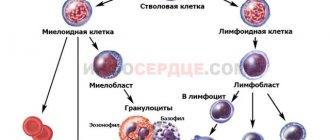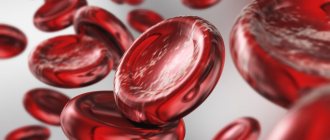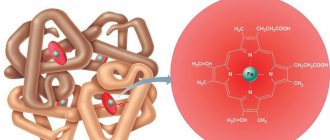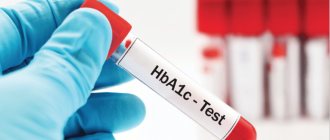Normal indicators: differences between “female” and “male” hemoglobin
The level of hemoglobin in the blood is not a constant and common value for all. Indicators depend on a number of factors: gender, habits, lifestyle, diet, region of residence, general health are just some of the factors that determine the hemoglobin content in the blood.
So, the indicator increases if you eat foods rich in iron:
- liver,
- buckwheat,
- meat,
- fish,
- nuts,
- dried fruits,
- legumes,
- greenery,
- vegetables, etc.
But with poor nutrition and strict diets, there is a lack of iron-containing protein. Hemoglobin levels also decrease during profuse sweating (iron “comes out” along with sweat). Therefore, residents of regions with hot climates need to constantly keep their finger on the pulse.
Standard hemoglobin values in men are slightly higher than in women. This is due both to monthly menstrual blood loss in the fair sex and to the fact that the level of male sex hormones, in particular testosterone, is lower in women than in men. It is these hormones that have a stimulating effect on hematopoiesis, hence the difference between “female” and “male” hemoglobin.
To be fair, it is worth saying that for women, the norm of hemoglobin in the blood is not a universal indicator.
Factors on which hemoglobin levels depend in women
Age
The saying is true for all people: the older we get, the thicker the blood. The norm for a woman is considered to be 120–140 grams per liter. However, for representatives of the fair sex, standard indicators differ depending on age (see table).
Table. Reference hemoglobin values depending on age
| Age (years) | Indicators of normal hemoglobin in blood (g/l) |
| 18–19 | 115–140 |
| 20–29 | 118–150 |
| 30–39 | 120–145 |
| 40–49 | 120–140 |
| 50–59 | 116–138 |
| 60–69 | 115–135 |
| 70–85 | 105–130 |
Pregnancy
The condition of a woman when a fetus develops in her body has its own normative values, since due to the growth of the fetus and placenta, the blood volume in the body increases. The norm for this period is 110–130 g/l. Menstrual cycle: Monthly blood loss leads to a change in the norm of hemoglobin in the blood within the range of 110–120 g/l.
Lifestyle and bad habits
Higher rates may be observed in women who are professionally involved in sports - up to 160 g/l or in women who smoke - up to 150 g/l. This deviation is considered normal.
Medicine owes the discovery of hemoglobin to the German scientist R. Huenefeld - it was he who isolated this substance in 1839 from the blood of an earthworm. More than a century later, in 1962, the English biochemist M. Perutz received the Nobel Prize for studying the structure and functioning of hemoglobin.
Hemoglobin in the blood is increased: why and what to do?
The body is a constantly changing system, so small fluctuations within normal limits are acceptable. They can be caused by food intake or change throughout the day depending on the presence or absence of physical activity.
An increase in hemoglobin levels in women is quite rare. However, if hemoglobin is elevated and reaches 160 g/l or more, then this can be caused by both physiological and pathological reasons.
Physiological reasons
These include external factors that affect the body in a certain way. Thus, excessive consumption of iron-containing drugs leads to an increase in hemoglobin levels, and their cancellation returns the indicators to normal.
Eating food high in iron “works” according to the same principle, but after some time the body distributes iron as a self-organizing system.
Also, increased hemoglobin can be caused by constant living in hypoxic conditions, i.e. high in the mountains. In such conditions, the body experiences a lack of oxygen and compensates for it by producing a large number of red blood cells. However, doctors do not consider this phenomenon as a pathology.
Pathological causes
It is much more dangerous if the content of iron-containing protein reaches 180–190 g/l for no apparent reason. In this case, an increase in viscosity and disruption of blood microcirculation, blue discoloration of the tips of the fingers and toes may be observed. Such symptoms may be accompanied by irritability, absent-mindedness, loss of appetite, and decreased performance. Elevated hemoglobin may indicate diseases such as
- diabetes,
- heart disease,
- cardiopulmonary failure,
- cardiac obstruction and some other pathologies.
In addition, high hemoglobin leads to poor circulation, which threatens the formation of blood clots in the vessels.
If these symptoms are familiar, you should consult a doctor for a more thorough examination and clarification of the diagnosis. A specialist may prescribe a course of antiplatelet drugs—blood thinning drugs—to bring hemoglobin back to normal. In this case, not only the effect will be treated, but also the cause - the underlying disease that caused an increase in the level of iron-containing protein in the blood. Also, to reduce hemoglobin, it is necessary to follow a diet that excludes foods high in iron. In addition, you should give up bad habits and avoid physical overload.
How to take a blood test?
The number of the element is determined using a general blood test. The collection of material is mainly carried out in the morning. Blood is taken on an empty stomach. Before undergoing the procedure, you should avoid consuming alcoholic beverages, heavy fatty foods, and excessive physical activity. After receiving the results of the examination, you need to consult a doctor. Only a doctor can determine whether the indicator is normal or if there are deviations. You can sign up for a consultation or appointment with a doctor here https://45plus.rf/registration/.
Low hemoglobin: why is it dangerous and how to correct the situation?
Unfortunately, low levels of hemoglobin in the blood of the fairer sex are not uncommon these days. This phenomenon is often observed both in women of reproductive age and in women after 50, since the latter have experienced monthly iron loss during menstrual bleeding for years - until the onset of menopause.
The body itself does not produce a useful microelement, so it should be remembered that its costs must be replenished with the help of proper nutrition or iron-containing nutritional supplements and medications.
Another reason for low protein levels in the blood is a lack of vitamins involved in the formation of hemoglobin. This
- folic acid,
- vitamins C and B12.
The thyroid hormone thyroxine also plays an important role in the production of hemoglobin. It is he who is responsible for the absorption of iron in the intestines. Therefore, a lack of thyroxine leads to a decrease in standard values. Gastritis and ulcerative lesions of the stomach or intestines can interfere with the absorption of iron. These diseases thin the mucous membrane and interfere with the absorption of iron. Long-term infectious diseases also lead to a decrease in hemoglobin levels.
How to increase
Various minerals and vitamins can increase the level of protein compounds. People with low levels are prescribed mineral or vitamin supplements to help the body produce more protein. Additionally, these vitamins and minerals are found in a variety of foods.
| Minerals and vitamins | Products containing them |
| Iron | Eggs, grains, green leafy vegetables, beans, meat and seafood. |
| Vitamin B 6 | Meat, fish, vegetables, nuts and seeds. |
| Vitamin B9 (folic acid) | Green leafy vegetables, beans and fruits. |
| Vitamin B12 | Fish, meat and dairy products. |
| Vitamin C | Citrus fruits, broccoli, potatoes and tomatoes. |
If your hemoglobin level is too low, your doctor will first do blood tests to find out the cause. If it is, for example, iron deficiency, taking iron supplements is sufficient for treatment. If the patient suffers severe blood loss, a blood transfusion may be required. If another disease is behind the low Hb value, appropriate treatment begins.
Anemia does not require special treatment unless it is associated with a deficiency of iron, folic acid (B9) or cobalamin (B12). To do this, it is enough to adjust your diet.
Treatment of iron deficiency anemia
Hemoglobin 114 in women, caused by iron deficiency, can be corrected by diet therapy and taking iron-containing medications, which should not be taken without first consulting a doctor.
Basic means of pharmacotherapy:
| Form of the drug | Compound | Daily dose |
| Sorbifer Durules, tablets | Ferrous sulfate, ascorbic acid. | 2 tablets |
| Aktifferincompositum, capsules | Ferrous sulfate, serine, folic acid, vitamin B12 | 2-3 capsules |
| Gyno-tardiferon, tablets | Ferrous sulfate, ascorbic acid, folic acid. | 1-2 tablets |
| Ferro-gradumet, tablets | Ferrous sulfate | 1-2 tablets |
| Maltofer, ferrum lek, drops | Iron hydroxide polymaltosate 3-valent. | from 35 to 100 drops |

Iron supplements may cause stomach upset, constipation, and diarrhea. Tablets or capsules are taken 2 hours before or after meals. Doctors recommend taking it together with vitamin E, succinic acid or honey. These substances promote rapid absorption of iron. It is not recommended to take more than 100-300 mg of iron per day.
After blood loss
Anemia associated with blood loss is a direct result of a decrease in circulating red blood cells. In an adult, the total blood volume is approximately 5 to 6 thousand ml and loss of 500 ml of blood does not present serious or lasting consequences. But if 1000 ml or more is lost, serious acute ailments can occur.
Some health problems contribute to iron loss, including chronic bleeding gums, hemorrhoids, or stomach cancer. In addition, long-term drug treatment may cause gastrointestinal bleeding. Parasites can also cause anemia because they steal blood and nutrients intended for the human host.
Treatment involves restoring blood volume with intravenous saline, dextran, albumin, or plasma. For large blood losses, the preferred treatment is fresh whole blood transfusion.
For vitamin B12 deficiency
Vitamin B12 and folic acid are nutrients that cannot be produced by the body and must be obtained through food. Vitamin B12 reserves in the body are stored for 3 to 5 years, and folic acid reserves are insignificant.
Deficiencies of vitamin B12 and folic acid are not common in healthy adults because the body is able to accumulate adequate reserves, which are constantly replenished through dietary intake or supplements.
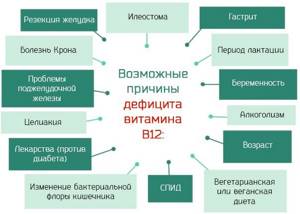
However, certain groups of people are at risk of developing these deficiencies:
- Senior citizens.
- Patients with intestinal problems.
- People who abuse alcohol.
- Subjects following a vegetarian or vegan diet.
- Women during pregnancy who require more vitamins.
- Subjects exposed to long-term use of certain medications.
Patients with intrinsic factor deficiency or clinical conditions causing generalized malabsorption require vitamin B12 injection. Folic acid is a supplement that should be taken orally.
All women of childbearing age who are expecting or do not exclude pregnancy are recommended to take folic acid before and during pregnancy to ensure an adequate supply and normal development of the fetus.
If a patient is deficient in vitamin B12 and folic acid, he will need both. In such cases, if a patient with vitamin B12 deficiency takes folic acid alone, macrocytic anemia (increase in red blood cell size leading to decreased hemoglobin) may be reversed, but neuropathies (nerve damage) caused by B12 deficiency will still occur.
Sometimes taking a good multivitamin rich in vitamin B12 may be enough. Taking 200-300 mcg of vitamin B12 per day is sufficient to correct mild deficiencies. These can be drops, tablets or capsules.
In some cases, stronger therapy is required with intramuscular injections in doses of about 500 mcg 2-3 times a week.
Alternative Approach
A number of herbs are traditionally used by herbalists to treat anemia and increase red blood cell count. But before starting treatment with medications, you should normalize the functioning of the gastrointestinal tract and improve immunity.
The following collection may help with this:
- Blackberry and raspberry leaves - 30 g.
- Chamomile flowers—20 g
- Melissa—10 years
- Celandine—20 g.
- Mallow flowers—30 g.
- Figs—100 g.
- Calendula officinalis flowers—40 g.
- Rosehip berries - 100 g.
Grind herbs and berries, mix, 2 tbsp. l. pour 500 ml of boiling water over the mixture, leave for 1 hour. Strain and take 1/2 cup three times a day 20 minutes before meals, warm.

Hemoglobin 114 in women can be increased with the help of a vitamin collection:
- Peppermint – 30 g.
- Dandelion root – 20 g.
- Ivan grass – 25 g.
- St. John's wort leaves – 20 g.
- Red clover – 20 g.
- White nettle – 20 g.
- Rose hips - 50 g.
- Blueberries - 30 g.
- Bergenia rhizomes - 15 g.
Pour 200 ml of boiling water 1 tbsp. l. crushed ingredients and leave covered for half an hour. You need to drink the infusion three times a day, 1/3 cup (before meals). The standard course of treatment for anemia is 25-30 days.
Slight fluctuations in hemoglobin values (116-114 g/l) are normal and may be associated with factors such as age, physical activity or periods of particular stress. However, you should be concerned about the subsequent decrease and the appearance of warning symptoms. Low concentrations occur when hemoglobin levels fall by about 20% of the normal range in women.

